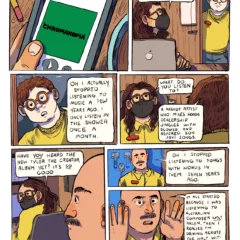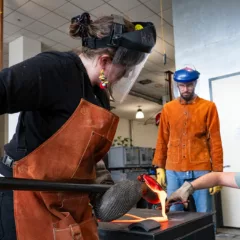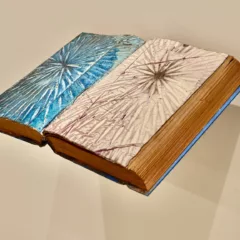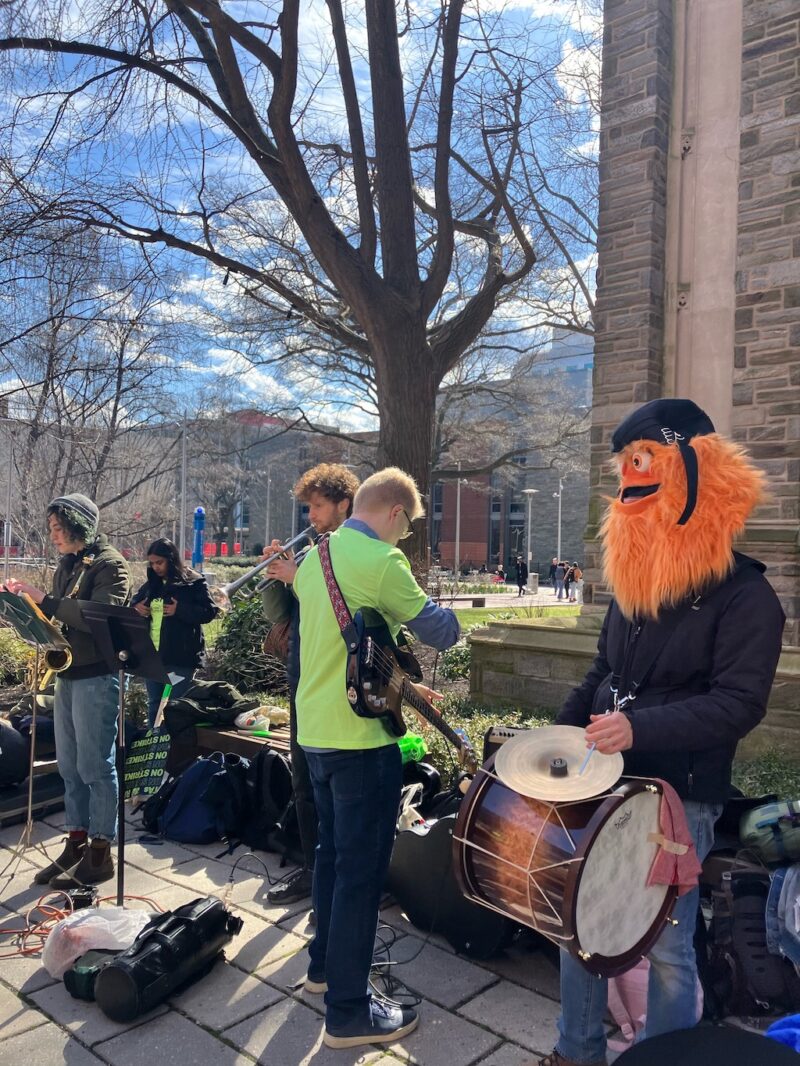
Author’s Preface
The Temple Graduate Student Association (TUGSA) has been on strike since January 31, with a picket line full of music, screen printing, dancing and teach-ins, this necessary interdisciplinary intervention has created solidarity and community. As of March 9, TUGSA and Temple came to a tentative agreement which was voted on by TUGSA, creating the new Collective Bargaining Agreement (CBA). This work of art was enough to crack Temple’s cruel machinations.
Picketing at Temple University (TU) had become a beautiful display of access and care, yet Temple University seemed to care little for its sinking public opinion and had cruelly taken back tuition remission from strikers, and threatened their access to health care. There was a city wide collaboration including the Philadelphia Museum of Art’s Worker’s Union, who were successful in their strike last year. I attended the picket line and have interviewed a Tyler School of Art union member for their experience walking the intersection between being a student, an artist, and a worker. We talked about artists as workers and our responsibility as cultural creators, and the idea of the strike as artistic intervention and expression.
The grad workers were striking for livable wages, paid time off, parental leave, health care, and a fair contract. TUGSA is a union that has organized since the 1990’s and has struggled since then for its members to be recognized and respected with fair contracts. Though they were on strike for six weeks this winter, organizing and bargaining for a new contract started in the fall. The union voted to authorize the strike in November, and after many unsatisfactory negotiations and scare tactics conducted by Temple, TUGSA officially went on strike the morning of January 31.
This violence is a constant theme with the large universities in this city, life long residents either have their houses taken away in the name of eminent domain or must leave due to rising rent. The pressure is on both sides of the river, squeezing out low income residents and Philly natives, like unwanted toothpaste.
Temple is classified as a non-profit, but they haven’t behaved that way. Some questions asked by the strikers: “Is the excess revenue being used effectively?” “Is it going to those who need it?” or “Is it going to those already in comfortable positions of power?”
There’s this disturbing idea that artists are separate from the events of the world. That we must observe and remain at a distance. This is a myth of neutrality – as if simply watching something unfold doesn’t change its outcome.
The whole world is watching. There is no way to remove artists from the world, we are the world–computers, canvas, ink, words, yarn, tulle, elastic, acid, conversation, pressure, gravity, light–everything that makes art is of the world, and we with it.
Art forms have been logistically important in communicating the political movements of oppressed peoples. At the Tyler School of Art, grads, undergrads, and faculty support the strike. Printmaking has been very active – printing posters, tee shirts, and more. Historically printmaking has been important in labor movements, disseminating art and information. This can make a big difference, drawing visibility and affecting public opinion. Has Temple ever cared about their public image? Beginning as early as 1955, TU has been using eminent domain to evict thousands from their homes.
At the picket line I saw all of the creativity going on within the strike. It was a performance of collective strength and perseverance in the face of corrupt power. A Tyler grad student I spoke with said that since the second week of the strike they played music, had food, danced and had fun in the face of shrinking benefits and mounting bills. This raucous style of action, made up of artistic expression also created multiple points of entry for those that would join.
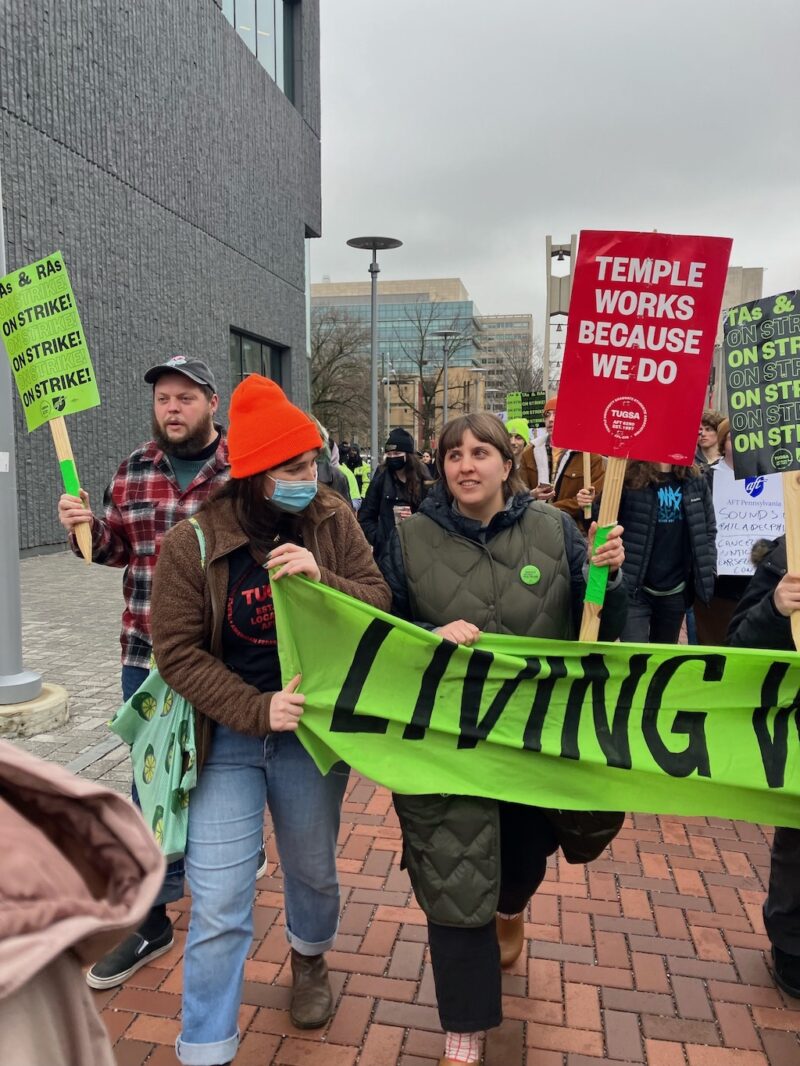
Even during the strike, the TA’s did not stop teaching. Lessons were held at the bell tower – explaining and breaking down what a strike is, the importance of it, and its historical significance. TUGSA was on strike, not just for better working conditions for themselves, but for the grads behind them, as well as their students. They are role models, teaching the students where their power is, how to access it and build it with others.
The strike is an intervention – it has to be. Art is an intervention, a break from the mundane. Art draws attention to things that were always there, but never noticed. In my time at Tyler – I learned so much from the grad students. They were interested in what I had to say, they spoke to me as an equal. Never once did I wonder if they were struggling to survive. Today, I am relieved that they have a fair contract. Although I wish that grad workers had that benefit during my time at Tyler.
In the past few years, workers at different art institutions have organized. The workers at the Art Institute of Chicago as well as the faculty at the SAIC unionized. The staffers at the Baltimore Museum of Art unionized, as well as the workers at the Dia Art Foundation. MICA faculty unionized and faculty at the New School were on strike for three weeks. The PMA, and the Mass MoCa unions were successful in negotiating a contract that met their needs. Often these efforts are met with retaliation, hopefully TUGSA’s resolve will give these unions strength.
At this time of strike, the beauty of its art can be seen as well as the cruelty of its cause.
After six weeks of striking – TUGSA and Temple have come to an agreement that addresses the workers’ concerns, and created the most robust collective bargaining agreement (CBA) that TUGSA has ever had. This is all due to the power of the collective. Let’s follow their example and be a resource to each other, if we all contribute we will not be hungry, and together we will win.
The author would like to thank Olivia Fredricks for the interview and providing photographs.
Lane Timothy Speidel is a Philadelphia based artist, curator, member of Vox Populi Gallery, and graduate of Tyler School of Art. They play with writing, sculpture, fiber, music, and painting to try to place themselves in the world. These different methods patchwork in freaky, funny, and sad installations, with seams visible.They are a white Jewish transexual disabled fag. They can’t sleep or are sleeping too much. They create sculptures and clothing from trash by necessity but also aesthetic interest. Their writing practice began as love songs to friends, and now its poetry, music, plays, and sci fi. Lane has been an artist in residence at Flux Factory and TPAIR.They have self-published many zines, and their writing has been in Ginger Zine, Stone Fruit, Art Blog, and Gay Wicked Ways. They know that our job is to upend all systems that do not make possible joy, family, community and celebration. They use their writing to look out of the keyhole of our locked capitalist reality, one hand always feeling for the key. See more of their art work on their website and more of their writing on their substack.



